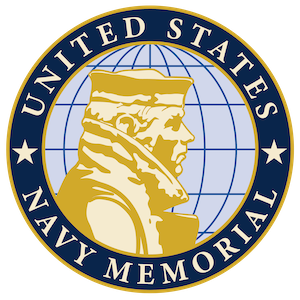Navy Unveils ‘Strike Group’ Recruitment Technology
WASHINGTON — The U.S. Navy displayed one of its latest high-tech recruitment tools, the Strike Group, in Washington, D.C. last week at the Navy Memorial.
The modular, mobile system showcases different aspects of Navy life in an aircraft carrier strike group, giving potential Sailors an idea of careers they could pursue on or under the water.
“What we have here is our interchangeable, cutting-edge, multi-unit mobile experience,” said Lieutenant Commander Tiffany Pearson, who was doing community outreach. “It’s called the Strike Group. Obviously it alludes to our carrier strike group in the Navy, and the goal here was to engage our target demographic, 17 to 24 years old, so Generation Z. Generation Z is huge on gaming, as you can see we have different patches at each different station, so game badges are a way to incentivize people to keep going.”
In Washington, the modules were arrayed around the U.S. Navy Memorial Plaza, just down Pennsylvania Avenue from the Capitol.
The Strike Group includes these modules:
All Hands, where players test their skills on the deck of a virtual aircraft carrier in a first-person reality game
Support, where participants survey an interactive map of the world showing Navy ships conducting humanitarian missions
Fly, where players operate a full-motion flight simulator
Dive, where participants take on the role of a Navy diver as part of an Underwater Construction Team
Achieve, which participants learn about hundreds of potential jobs in the Navy and get an AI-generated image of themselves in their recommended role
Seek, which showcases the “silent service” and allows playes to learn about life on a submarine taking part in an Ice Exercise near the North Pole
Train, where a Navy Seal trainer guides participants through a series of challenges to test their physical strength, mental fortitude and willpower.
At each station, participants would collect a badge showing their achievement.
“The overall motivation behind that is, unfortunately a lot of people do not have interaction with military members today, either active duty or reservist,” Pearson said. “So, our goal is, with this, to bring it around the country to high schools and colleges, universities, so individuals can get a hands-on experience … to see what it’s like to fly a plane maybe, or to be a diver if that interests them, or even see what humanitarian missions we’ve done. … We even have a trailer that shows them who they could be in the Navy.”
The Navy has previously used similar demonstrations, but the systems were both larger and less flexible. One was the Nimitz, which showcased life on an aircraft carrier, and another was the Burke, highlighting the Navy’s destroyers.
For the latest system, “we call it a strike group because it just doesn’t limit it to one platform … here, it’s a strike group, all-hands efforts,” Pearson said.
The weather for the system’s public debut was not the best, rainy and overcast, but Pearson said a number of potential recruits loved interacting with the technology, so “it has been a bit of a challenge, but it’s been great.”

